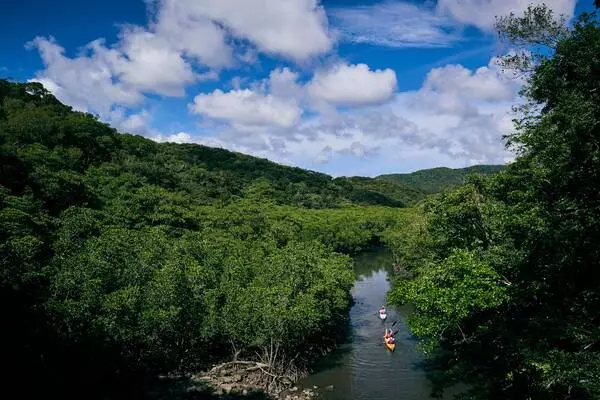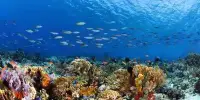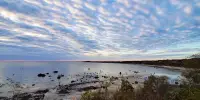Researchers discovered that the mangrove populations in the Ryukyu Islands are relatively isolated from one another using techniques from both genetics and oceanography, which has implications for conservation.
Mangroves are salt-tolerant trees that grow along the world’s coasts in the tropics and subtropics. Mangrove forests are critical to both nature and society. They protect coastal communities by acting as a natural barrier against tsunamis and storms. They filter pollution and soil runoff in the opposite direction. Because juveniles of coastal fish can easily hide between the trees, these forests also serve as a marine nursery ground. They also play an important role as a carbon sink, helping to mitigate climate change. However, mangroves are in decline all over the world.
Forests are frequently cleared to make way for farms and urban developments. Researchers from the Marine Biophysics Unit at the Okinawa Institute of Science and Technology (OIST), led by Prof. Satoshi Mitarai, conducted a study on how connected the mangroves are around Japan’s subtropical Ryukyu Islands to determine which of the remaining forests are the most important to protect.
Conservation outcomes motivate my research. It would be ideal if we could protect all of the mangrove forests, but this is not feasible. Our goal is to identify areas that should be protected first. For example, forests that are completely isolated and therefore won’t regenerate naturally if destroyed.
Maki Thomas
“Conservation outcomes motivate my research,” said Ph.D. candidate Maki Thomas, the paper’s first author, which was published in Frontiers in Marine Science. “It would be ideal if we could protect all of the mangrove forests, but this is not feasible. Our goal is to identify areas that should be protected first. For example, forests that are completely isolated and therefore won’t regenerate naturally if destroyed.”
This, she continued, will allow policy makers and environmental managers to identify important areas for conservation.
The trees will drop propagules into the water and, depending on the species, the propagule will float for a few days to a few months, sinking once it’s reached a good environment to germinate. The species used in this study — Rhizophora stylosa – produces propagules that can survive at sea for several months.
The research used two separate methods to answer their question on population connectivity – one stemming from genetics and the other, oceanography. First, the researchers collected mangrove samples from 16 different sites across four islands in the Ryukyus – the Okinawa main island, Miyako, Ishigaki, and Iriomote.

Ms. Thomas wanted to see if propagules from Iriomote could make it all the way to Okinawa’s main island and back. She used micro-satellite DNA (small DNA fragments) extracted from each mangrove sample to determine how closely related the various populations were. If a mangrove from Iriomote and a mangrove from Okinawa had a very similar genetic structure, it would imply that propagules from Iriomote are traveling to Okinawa on the currents. Large differences in genetic structure, on the other hand, would imply that the populations are isolated from one another.
Then the researchers deployed 31 GPS equipped buoys that mimic propagules from Iriomote to see if they would travel between the different islands on the currents, and how long they would take.
Both methods discovered that the mangrove populations in the Ryukyu Islands are very disconnected. In fact, the mangroves on Iriomote’s west coast were completely separate from those on the east coast. According to the findings of genetic and oceanographic analyses, Okinawa’s main island recruits almost no mangrove propagules from other sites. However, some of the genetic traits of Okinawa’s main island mangroves were observed in mangroves on other islands. Although the research discovered that west Iriomote is isolated, there is the possibility of migration from Okinawa to east Iriomote.
Overall, the genetic exchange in the archipelago is rare and random. As for the GPS buoys, some of them made it to Ishigaki and Miyako and even South Korea and south China, around one third beached on Iriomote, but most of them were taken out into the Pacific by the Kuroshio current.
So, what does this mean for conservation?
“Efforts from local conservation groups are extremely important,” Ms. Thomas stated. “Because these forests aren’t particularly connected, removing one is unlikely to result in natural regeneration. It is far easier to protect existing forests than it is to restore them. Each mangrove forest requires site-specific conservation plans and local monitoring.”
Ms. Thomas went on to say that Iriomote, which is part of a national park and was named a UNESCO world heritage site last year, exemplifies the importance of preserving mangrove forests.















